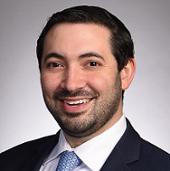Agenda
Please note: all timings are listed in EDT, to view start times in your local timezone, please click here.
Join us in person or virtually
-
Registration and coffee
-
Welcome
Moderator
 Terry Hyland
Senior Editor, North America, Chemical Watch News & Insight, Enhesa Product Intelligence
Terry Hyland
Senior Editor, North America, Chemical Watch News & Insight, Enhesa Product Intelligence - Session one: Regulatory developments in North America and hot topics
-
Keynote FDA’s continuing priorities for cosmetics
- FDA’s authority
- Discussion of Federal Food, Drug and Cosmetic Act; Fair Packaging and Labeling Act; and other authorities;
- Summary of selective priority initiatives; and
- Parting considerations
.jpg) Linda M Katz
Director of the Office of Cosmetics and Colors (OCAC), in the Center for Food Safety and Applied Nutrition (CFSAN), Food and Drug Administration (FDA)
Linda M Katz
Director of the Office of Cosmetics and Colors (OCAC), in the Center for Food Safety and Applied Nutrition (CFSAN), Food and Drug Administration (FDA) - FDA’s authority
-
Key trends in the USA - an overview
- reviewing the structure of the U.S. Federal laws and regulations that govern and define products that may be sold as cosmetics under the U.S. Federal laws and regulations that govern cosmetic products;
- review of the FDA’s enforcement authority and the role of structure function claims which under U.S. FDA laws can change the regulatory status of a product from a cosmetic to a drug; and
- look at the various state laws and strategies to address these varying state issues.
-
Q&A
-
Break and Refreshments
-
Some key developments at state level – a panel session
-
CA Fragrance disclosure law
VIRTUAL PRESENTATION
- The California Safe Cosmetics Act
- Cosmetic Fragrance and Flavor Ingredient Right to Know Act
- Reporting to the California Safe Cosmetics Program
 Paula Johnson PhD, MPH
Chief - California Safe Cosmetics Program, California Department of Public Health
Paula Johnson PhD, MPH
Chief - California Safe Cosmetics Program, California Department of Public Health -
New York ingredient disclosure
- fragrance ingredient communication landscape;
- 2023 NY state outlook; and
- industry response, including The Fragrance Conservatory.
-
Washington State EPR on packaging for personal care products
VIRTUAL PRESENTATION
- The ups and downs of the implementation of Washington’s SB5022 (minimum recycled content in personal care product plastic containers); and
- What’s coming for next year.
-
Q&A
-
Lunch and networking
-
Demonstration on the global cosmetics comparison tool
This presentation will give a sneak preview of the Chemical Watch Global Cosmetics Comparison Tool.
The tool gives you a bird’s eye view of global cosmetics regulations that will empower your company to make strategic global launches in a harmonised, cost efficient and regulatory compliant manner.
-
Welcome back
Moderator
-
Substances of concern in cosmetics
-
Global treatments of oxybenzone in sunscreen
-
How is the regulation of toxic chemicals in cosmetics emerging in US states?
- Overview of state regulation of toxic chemicals in cosmetics
- Current regulations and overview of pending regulations
- Role of NGOs in driving regulations/litigation
- General discussion of PFAS lawsuits against cosmetics companies
- Current state of testing for PFAS in cosmetics and personal care products
 Steven M. Siros
Partner, Chair – Environmental Litigation Practice, Co-Chair – Environmental Workplace Health & Safety Practice, Jenner & Block
Steven M. Siros
Partner, Chair – Environmental Litigation Practice, Co-Chair – Environmental Workplace Health & Safety Practice, Jenner & Block -
US Regulations on the use of cannabis in cosmetics
- The market for cosmetics containing hemp and hemp-derived cannabidiol (CBD) has grown sharply in recent years. The speed at which federal and state rules governing CBD are developing presents potential compliance risks. Brands looking to enter this growing space should ensure that their products comply with applicable law in the jurisdictions they aim to sell the products;
- Cosmetics containing cannabis and hemp-derived CBD can also raise substantial legal risks, and these risks are exacerbated when the products make unsubstantiated health claims; and
- Recent legislative proposals at the federal level would affect how the U.S. regulates cannabis and hemp in cosmetic products, in addition to food and beverage products.
-
Q&A
-
Short break and refreshments
-
The Safety Beauty bill package
This suite of 4 bills introduced in the U.S House of Representatives will close gaps in cosmetic safety that threaten the health of consumers and make it hard for cosmetic companies to ensure the products they are making and selling are safe, by:
- requiring fragrance and flavor ingredient disclosure;
- banning the worst-of-the-worst chemicals from cosmetics;
- creating safety protections for women of color and salon workers; and
- requiring supply chain transparency
 Janet Nudelman
Sr. Director of Program and Policy, Breast Cancer Prevention Partners. Director, Campaign for Safe Cosmetics
Janet Nudelman
Sr. Director of Program and Policy, Breast Cancer Prevention Partners. Director, Campaign for Safe Cosmetics -
EPR for cosmetic packaging materials
- General overview of EPR (policy goals, examples, etc.);
- EPR models (stewardship organization model vs. producer responsibility model); and
- China’s EPR law
-
Stay ahead of regulations and trends
- Chemicals of concern vs. safer design;
- Identifying safer alternatives; and
- CF safer - amplifying safer ingredients.
-
Q&A
-
Close of day one and cocktail reception
-
End of day one







.jpg)


